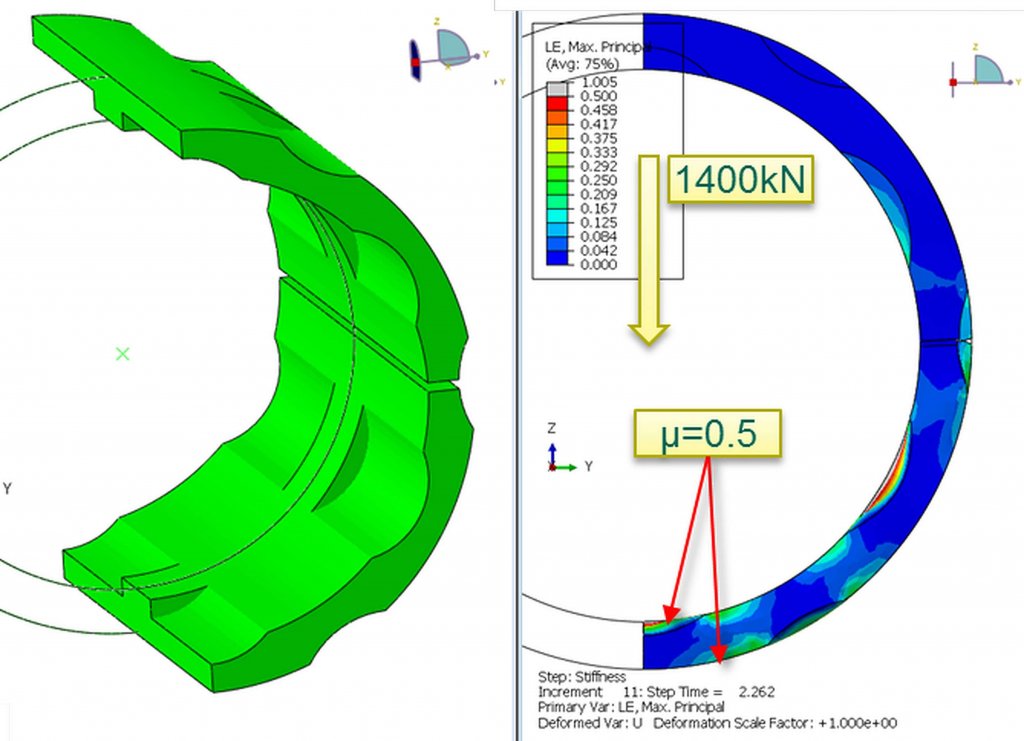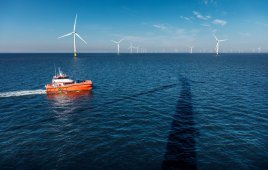By Benjamin Müller, Head of Industrial Anti-vibration Technology
EFFBE GmbH

Benjamin Müller
It is no secret wind turbines must withstand harsh conditions, including fluctuations in temperature and humidity, and vibrations from changes in wind and rotor speeds. For the components that make up a turbine, such as the bearings, gearbox, brakes, and blades, durability and reliability are essential to a developer’s bottom line. The same holds true for the smallest components, such as seals, bonds, and connectors, which have an important job of keeping the larger components in place.
A couple loose connectors, such as those that support gearbox mountings or a turbine’s drive-shaft system, could lead to a serious problem. Now imagine a lightweight connector that can “sense” its condition and provide that data to a wind operator. A recent innovation of this sort in elastomers and small turbine components with integrated sensors may help reduce wind-turbine maintenance costs.
Support components
The small devices that connect and support the components of a wind turbine are sometimes overlooked when assessing the overall cost and production of a wind farm.

The model of a torque-arm support component is for a three-point gearbox mounting. The elastomer mounting is made of EFFBE Urelast UN 90, which satisfies all requirements for load-bearing capacity and durability for each axis. Its benefits include low weight, it requires little space, and lasts the test of time.
However, their ability to endure a turbine’s internal conditions, including changes in pressure and temperature while minimizing wear and maintenance needs, impacts a project’s ROI.
Seals and connectors are used with a number of components in a wind turbine. To list just a few: torque arms for gearboxes and drive shafts for generators, gearbox mountings, rotor bearings, rotor hubs, ventilation systems, azimuth (yaw) brakes and drive systems, and others. Reliability is key to ensure the safe operation of all turbine components and as a means of reducing overall maintenance.
A smaller footprint in terms of size and weight also may impact a turbine’s overall lifetime costs. In fact, recent tests compared high-performance elastomer components to ordinary rubber-metal bonds, which are frequently used in wind turbines for gearbox mountings.
The results found that the elastomer connectors (and specifically, EFFBE’s Urelast) withstood four times higher loads at comparable dimensions. One benefit: the size of components made of Urelast elastomer can be reduced by 30 to 40%.
Additionally, a reduction in component weight of more than 80% is possible because of the elimination of the otherwise necessary metal inserts for conventional laminated rubber-metal parts.
Material choices
It is common practice to connect the support areas of elastomer elements to sufficiently rigid materials (typically metal) to influence its spring characteristic. However, Urelast is composed of elastomer with carbon-fiber reinforced plastic (CFRP) material, instead of metal, to further reduce component weight. Such material makeup provides an alternative to metal disk spring connectors. The primary advantage: improved reliability.

EFFBE Urelast UN90 components are used in the brakes of wind turbine azimuth system and as an alternative to spring disks.
Typically damage to a single conventional disk spring results in the immediate loss of the entire connector, which is not the case with Urelast components because of the material’s “emergency operation-like” properties. This means that even if the elastomer body of a Urelast spring is damaged, a sudden drop in force will not occur or cause damage that could stop it useful operation.
For example, damage to wind turbine, torque-arm support components and gearbox mounts are typically attributed to excessive load peaks, which result from excessive spring stiffness in conventional laminated rubber-metal springs. A retrofit Urelast spring can reduce vibration effects and spring stiffness 1.5 to twice the spring deflection, which results in a longer life.
The visco-elastic properties of Urelast’s material composition, such as its ability to minimize the effects of stress and strain over time, increases the operational reliability (of it and the turbine), and reduces unplanned maintenance work and related costs. Maintenance work is particularly significant and cost-intensive in critical turbine areas, such as azimuth drive systems and brakes — and gearbox mountings.
Sensor communication
Integrated sensors provide another unique feature of Urelast-made components. It has typically been challenging to obtain accurate wear and tear data on a turbine and its components from direct exposure to dynamic and static loads — until now. These extremely small, yet sensitive devices are built right into the elastomer and monitor the their loads.

EFFBE Urelast components are optimized using FEM calculation to reduce tension peaks to a minimum. The example determined the torque-arm bearing for a three-point gearbox mounting. This type of design needs no additional metal inserts in the elastomer and, therefore, drastically reduces the component weight.
This means data from a Urelast spring-loaded connector — transmitted by built-in sensors — provides a unique “hands-on” type of insight about the load, its effect (such as a component’s position change), and the wear behavior of adjacent machine parts in the wind turbine. This is invaluable insight for planning more cost-effective maintenance visits.
Information gained from long-term field trials involving gearbox support elements for wind turbines (with sensors) has led to important analysis and insight that may affect turbine O&M decisions. Basically, these mini sensors provide another form of automated machine control and condition monitoring for more proactive O&M.
However, the sensor data may also prove significant for wind research. The devices provide a better understanding of the impact wind turbines and components face over time, and offer a database from which to draw ideas for new product innovations that help advance the wind industry.
Filed Under: Components, News, O&M, Turbines



